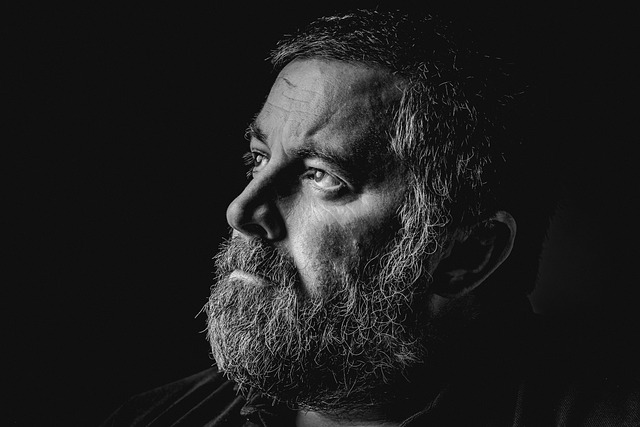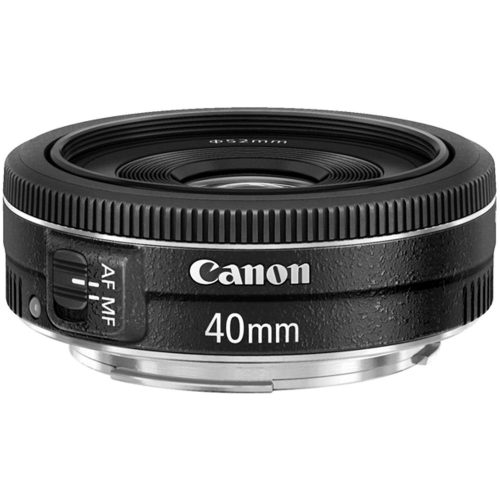Black and white portrait photography is a captivating art form that focuses on capturing the essence of a subject in shades of gray. It involves using monochrome tones to create striking images that highlight the subject’s features, emotions, and expressions. By removing the distraction of color, black-and-white photography allows the viewer to focus on the subject’s character and the story behind the image.
In black-and-white portrait photography, the absence of color allows the photographer to emphasize contrast, texture, and the play of light and shadows. This heightened contrast adds depth and dimension to the image, making it visually striking and captivating. By focusing on the interplay between light and dark, black and white portraits can evoke a wide range of emotions, from the soft and ethereal to the dramatic and intense.
In this tutorial, we will explore the art and techniques of black-and-white portrait photography, and uncover the secrets to capturing stunning and evocative images. From understanding the importance of lighting, composition, and expression, to delving into the technical aspects of shooting in RAW, selecting the right camera settings, and experimenting with filters, we will cover a wide range of topics to help you excel in this captivating art form.

Photo by aykut bingül on Unsplash
Importance of Simplicity in Photography
Simplicity plays a crucial role in photography, especially in black-and-white portrait photography. It allows the subject to take center stage and ensures that the viewer’s attention is not divided. By eliminating the distractions caused by vibrant colors, simplicity helps convey the subject’s emotions, personality, and overall mood of the photograph. It allows the photographer to capture the raw beauty and essence of the subject, creating images that are timeless and impactful.
Simplicity is achieved through various means. It involves using minimalistic backgrounds, focusing on the subject’s expressions and features, and eliminating any elements that may divert attention from the main subject. By embracing simplicity, photographers can create images that are visually striking and emotionally powerful.

Photo by Ales Dusa on Unsplash
The Power of Black and White
Black and white portrait photography holds a unique power that lies in its ability to emphasize contrast and texture, convey emotions and mood, and maintain a timeless appeal. By removing the distraction of color, black and white portraits allow the viewer to focus on the essence of the subject and the story behind the image. Whether you’re capturing a candid moment or creating a carefully composed portrait, black-and-white photography offers a captivating and elegant way to showcase the power of simplicity.
-
Emphasizing Contrast and Texture
Black and white portrait photography has a unique ability to emphasize contrast and texture, creating visually captivating images. By removing the distraction of color, the focus shifts to the interplay between light and dark tones. This heightened contrast adds depth and dimension to the photograph, making it visually striking and engaging. The textures in the subject’s skin, clothing, or surroundings become more pronounced, adding a tactile quality to the image. Through the use of light and shadow, black and white portraits can create a sense of drama and intrigue.
-
Conveying Emotions and Mood
One of the remarkable aspects of black-and-white portrait photography is its ability to convey emotions and set the mood of the image. Without the influence of color, the viewer’s attention is drawn to the subject’s expressions, body language, and overall composition. The absence of color allows the photographer to capture raw emotions and tell a story through the subtle nuances of light and shadow. Whether it’s capturing a moment of joy, contemplation, or sadness, black and white portraits have a way of evoking a deep emotional response from the viewer.
-
Timeless Appeal
Black and white portrait photography has a timeless appeal that transcends trends and fads. While color photographs may be subject to changing color palettes and styles, black and white images have a classic quality that remains relevant and captivating throughout the years. The absence of color allows the viewer to focus on the subject’s features, expressions, and overall composition. This timelessness makes black and white portraits suitable for a wide range of purposes, from personal portraits to editorial or fine art photography.

Photo by Pixaba
Techniques for Capturing Stunning Black and White Portraits
By eliminating color distractions, Black and white portrait photography allows you to focus on the core elements of composition, lighting, and post-processing. In this blog section, we will explore three key techniques that can help you capture stunning black-and-white portraits: lighting and shadows, composition and framing, and post-processing tips.
-
Lighting and Shadows
When it comes to the captivating world of Black and White Portrait Photography, lighting holds the key to unlocking the essence of your subjects. You have the flexibility to choose between artificial light, natural light, or even a blend of both to create stunning visuals. Personally, I find the versatility and control of artificial light appealing, allowing for the infusion of drama and intensity into my portraits. However, don’t underestimate the magic that can be captured using natural light alone, even without a fancy studio setup.
Contrast, in particular, plays a vital role in shaping the impact of your black-and-white portraits. To experiment with contrast, try out split-lighting and Rembrandt-lighting patterns.
Split lighting emphasizes a striking interplay of light and shadow by illuminating one side of the subject’s face, as shown below:

Photo by Ike louie Natividad
While Rembrandt lighting casts a triangular patch of light on the cheek opposite the light source, adding an air of elegance and mystery to your images, as shown below:

Photo by Bruno Salvadori
If you prefer a softer and less high-contrast look, you have the freedom to adjust your lighting setup accordingly. By reducing the angle of your light source, you can achieve a more delicate effect, capturing a gentle interplay of light and shadow.
Whether you embrace artificial or natural light or blend the two, trust your instincts and let your creative vision shine through. Allow the interplay of light and shadow to weave a captivating narrative, transforming your subjects into timeless works of art.
-
Composition and framing
Composition is key to any photograph, and black and white portraits are no exception. Pay attention to the placement of your subject within the frame and consider using the rule of thirds or leading lines to create a dynamic composition. Experiment with different angles and perspectives to add visual interest. Remember, simplicity can be powerful in black-and-white photography, so don’t be afraid to eliminate distracting elements and focus on the essence of your subject.
-
Post-processing Tips
Post-processing is where you can truly bring your black-and-white portraits to life. Start by shooting in RAW format to have more flexibility in adjusting tones and contrast during post-processing. In software like Adobe Lightroom or Photoshop, experiment with adjusting the black-and-white levels, highlights, shadows, and clarity to enhance the overall impact of your image. Don’t be afraid to play with different presets or create your own to achieve the desired mood and style.
Remember, the goal of post-processing is to enhance the inherent qualities of your black-and-white portraits, not to rely on heavy editing or excessive filters. Keep it subtle and aim for a balanced look that maintains the integrity of the original image.

Photo by Shahadat Hossain
Showcasing the Elegance of Simplicity
In the realm of Black and White Portrait Photography, simplicity has an undeniable charm that can elevate your images to new heights. By stripping away distractions and focusing on the core elements, you can create captivating portraits that exude elegance and timeless beauty. In this section, we will explore three techniques to showcase the power of simplicity: minimalistic backgrounds, emphasizing the subject’s expressions and features, and eliminating distractions.
-
Minimalistic Backgrounds
To draw attention to your subject, opt for minimalistic backgrounds that provide a clean and uncluttered canvas. A plain wall, an open sky, or a simple backdrop can serve as the perfect backdrop to highlight the subject’s presence and create a sense of focus. By keeping the background simple, you allow the viewer to fully appreciate the subject’s beauty and character.
-
Focus on the Subject’s Expressions and Features
In Black and White Portrait Photography, expressions and features play a crucial role in conveying emotions and telling stories. Direct your focus towards capturing the subject’s unique expressions, whether it’s a genuine smile, a contemplative gaze, or a moment of vulnerability. Pay attention to the eyes, as they can convey depth and intensity. Emphasize the subject’s distinctive features, such as facial contours, wrinkles, or freckles, as they add character and authenticity to the portrait.
-
Eliminating Distractions
Distractions can detract from the impact of a black-and-white portrait. To create a powerful image, eliminate any unnecessary elements that may divert attention from the subject. This can involve careful composition, cropping, or even post-processing adjustments. Remember, simplicity is key. By removing distractions, you allow the viewer to fully engage with the subject and appreciate the nuances of their expression and personality.

Image by abeer muted from Pixabay
Tips for Successful Black and White Portrait Photography
To create impactful black-and-white portraits, consider the following tips that can help you achieve success in your photography journey.
-
Learn When Black and White Photography Can Work
Understanding when black-and-white photography can be the most effective choice is crucial. While color photography allows for vibrant and dynamic images, black-and-white photography has a way of stripping away distractions and focusing on the essence of the subject. It can work particularly well in situations where you want to convey emotions, emphasize textures, or create a classic and timeless feel.
-
Build a Connection with the Subject
Creating a connection with your subject is vital in any genre of photography, and it holds true for black-and-white portraits as well. Take the time to communicate and establish a rapport with your subject. This will help them feel more comfortable and open, allowing you to capture genuine and authentic expressions.
-
Choose Your Lighting Setup Carefully
Lighting plays a crucial role in black-and-white portraits, shaping the mood and highlighting the subject’s features. Experiment with different lighting setups, whether it’s natural light, artificial light, or a combination of both. Consider the direction and quality of light to create the desired effects of shadows and highlights that enhance the depth and texture of the image.
-
Understand the Power of Contrast
Contrast is a key element in black-and-white photography. Experiment with different levels of contrast to enhance the visual impact of your portraits. Play with the interplay of light and shadow to create depth and dimension within the image. Strong contrast can evoke a sense of drama, while softer contrast can lend a more subtle and ethereal quality.
-
Explore Your Camera Settings
Additionally, check if your camera offers a dedicated black-and-white option. This feature allows you to preview how your photo will appear in black and white, giving you a helpful glimpse of the final outcome. For instance, if you’re focusing on black-and-white flower photography and want to assess the interplay of light and shape, utilizing the black-and-white or monochrome option can provide valuable insights.
-
Consider the Background and Composition
The background and composition play integral roles in black-and-white portraits. Choose backgrounds that complement and enhance the subject rather than compete for attention. Look for simplicity, clean lines, and negative space to draw focus to the subject. Pay attention to the rule of thirds, leading lines, and symmetry to create a balanced and visually pleasing composition.

Image by Thomas Rüdesheim from Pixabay
-
Use a small aperture and low ISO
By selecting a small aperture, such as f/8 or higher, you increase the depth of field, ensuring that your subject remains consistently sharp from front to back. This helps in capturing intricate details and enhancing the overall clarity of your black-and-white portraits.
In addition, maintaining a low ISO setting reduces the presence of digital noise, resulting in cleaner and more visually pleasing images. Noise can distract from the fine details and smooth tones that make black and white portraits so captivating. Therefore, keeping the ISO at its lowest feasible level is essential for achieving high-quality results.
-
Check your exposure setting
After you take the shot, your digital camera can display a histogram, which is a graphical representation of the tonal value of your shot. The histogram of a well-composed photograph will indicate that the majority of pixels are away from the shot’s most extreme blacks and extreme whites. If your shot mostly contains extremes, you will need to adjust your exposure to preserve detail in your final black-and-white image.
-
Mind the Sharpness of the Subject’s Eyes
The eyes are often considered the windows to the soul, and this holds true in black-and-white portrait photography. Ensure that the subject’s eyes are sharp and in focus, as they draw the viewer’s attention and convey emotions. Pay attention to the focus and depth of field to achieve the desired level of sharpness.

Photo by Hans Isaacson on Unsplash
-
Pay Attention to the Subject’s Expression
Expressions can speak volumes in black-and-white portraits. Capture genuine emotions and moments of connection by observing and engaging with your subject. Encourage them to express themselves and be open to capturing a range of emotions, from joy and laughter to introspection and vulnerability.

Photo by ismail taibi on Unsplash
-
Pay Attention to Textures and Patterns
Black and white photography allows textures and patterns to take center stage. Look for interesting textures in the subject’s clothing, skin, or surroundings that can add visual interest and tactile quality to your portraits. Patterns, such as lines, shapes, or repeating elements, can create a sense of rhythm and harmony within the composition.

Photo by Nicola König on Unsplash
-
Experimenting with Different Angles and Perspectives
To add visual interest and create unique compositions, don’t be afraid to experiment with different angles and perspectives. Explore various vantage points, such as shooting from above, below, or at eye level. This can create a fresh and dynamic perspective that adds depth and dimension to your black-and-white portraits.

Image by Lee Murry from Pixabay
-
Explore the Creative Possibilities of Filters
Filters play a crucial role in black-and-white landscape photography by allowing you to control the amount of light that enters your camera. They can be a valuable asset for adjusting the overall darkness or enhancing the contrast in your images.
For instance, using a polarizer filter on your camera while capturing a black-and-white landscape can deepen the shadows, adding a compelling level of contrast to your composition. By selectively manipulating the light, you can create a visually striking image that captivates viewers.
-
Capture Images in RAW
When it comes to black and white photography, shooting in RAW format is highly recommended, especially for professional photographers. RAW provides the flexibility to fine-tune your photos and even revert them back to color if needed, ensuring optimal control over the final result.
-
Tell a Story with Your Portraits
Black and white portraits have a storytelling quality that can convey emotions and narratives. Think beyond capturing a single moment and aim to tell a larger story through your images. Consider the subject’s background, experiences, or passions and incorporate elements that symbolize their story. This can add depth and resonance to your portraits.

Photo by Gautam Ramuvel on Unsplash
-
Consider converting a colored photo into black and white
Turning a colored photo into black and white can be a compelling option for several reasons. While color photography allows us to capture the vibrancy and richness of the world around us, black and white photography has a unique ability to convey emotions, create a sense of timelessness, and emphasize the essence of the subject.
-
Practice Patience and Attention to Detail
Black and white portrait photography requires patience and attention to detail. Take the time to compose your shot carefully, paying attention to elements such as framing, symmetry, and leading lines. Look for subtle details that can enhance the overall composition and storytelling within the image.
In conclusion, successful black-and-white portrait photography goes beyond capturing a simple image. It involves understanding the power of black and white, building a connection with your subjects, and carefully considering lighting, sharpness, and expressions. By experimenting with different angles, and perspectives, and practicing patience and attention to detail, you can create impactful and timeless black-and-white portraits that evoke emotions and tell compelling stories. So, grab your camera, embrace the monochromatic world, and embark on a journey of capturing the essence of your subjects in the captivating realm of black-and-white portrait photography.

Photo by Jeffrey Clayton on Unsplash
Inspiring Examples of Black and White Portrait Photography
Black and White Portrait Photography has captivated artists and viewers alike for generations. In this section, we will explore the work of famous photographers known for their black-and-white portraits and showcase a diverse range of styles that demonstrate the timeless beauty and expressive power of this art form.
Famous Photographers Known for Their Black and White Portraits
-
Ansel Adams:
Renowned for his breathtaking landscapes, Ansel Adams also made significant contributions to black and white portraiture. His mastery of light and composition allowed him to capture the depth of character and emotion in his subjects, creating iconic portraits that resonate with viewers to this day.

Photo by Ansel Adams
-
Dorothea Lange:
Dorothea Lange’s documentary-style black and white portraits during the Great Depression era are powerful representations of human resilience and social realities. Her empathetic approach and a keen eye for capturing raw emotions made her a pioneer in the field.

Photo by Dorothea Lange
-
Richard Avedon:
Richard Avedon’s minimalist approach to black-and-white portraits transformed the genre. His subjects, often celebrities and cultural icons, were captured in stark and honest moments, revealing their true essence with striking clarity and intensity.

Photo by Richard Avedon
Showcase of Diverse Black and White Portrait Styles
-
Classic Portraiture:
Classic black and white portraiture emphasizes the beauty and elegance of the subject. With careful attention to lighting, composition, and posing, these portraits evoke a sense of timelessness and sophistication.
-
Fine Art Portraits:
Fine art black and white portraits often blur the line between photography and art. These portraits explore creative interpretations, utilizing unique angles, unconventional lighting, and artistic post-processing techniques to convey emotions and evoke thought-provoking narratives.
-
Environmental Portraits:
Environmental portraits place the subject within their natural surroundings, offering insights into their lives, passions, and personalities. These portraits capture the subject’s connection with their environment, adding depth and context to the image.
-
Candid Portraits:
Candid black and white portraits capture genuine and unposed moments, revealing the subject’s authentic expressions and emotions. These portraits excel in conveying stories, relationships, and fleeting moments that reflect the beauty of the human experience.
Black and White Portrait Photography offers a versatile and evocative canvas for photographers to express their creativity. From the iconic works of famous photographers like Ansel Adams and Dorothea Lange to the diverse range of styles showcased in classic, fine art, environmental, and candid, this art form continues to inspire and captivate viewers.

Photo by Goran Petkovic on Unsplash
Conclusion
Throughout this guide, we’ve explored various tips and techniques to help you master the art of black-and-white portrait photography. From understanding the significance of lighting and composition to building a connection with your subject, each aspect plays a crucial role in creating stunning black-and-white portraits.
We’ve also emphasized the importance of experimenting and pushing creative boundaries. Whether it’s through different lighting setups, camera options, or filters, embracing the spirit of exploration allows you to discover your own unique style and produce truly remarkable images.
Furthermore, we’ve delved into the realm of post-processing, highlighting the significance of maintaining a balanced approach. While post-processing can enhance and refine your black-and-white portraits, it’s crucial to strike a balance that preserves the authenticity and integrity of the original image.
In the world of black-and-white portrait photography, the journey is as important as the destination. It’s a continuous process of learning, refining your skills, and developing your artistic vision. With each click of the shutter, you have the opportunity to capture moments of depth, emotion, and raw beauty that transcend time.
Related posts
Photography Lighting Techniques – Portrait Lighting Setup
Turn Color Photos Into Black & White
How To Get Black Background Photos
Top Reasons Photographers Prefer Using Black And White Pictures
Black And White Photography – Learn And Excel The Magic Art
Additionally, we have a special category for portrait photography, you can check it out here.
Thanks for reading, I hope you enjoyed the article, in case you have any questions just drop them below & I will be happy to answer you.
The featured Photo by Amos Vodis on Unsplash
If you enjoy the site, don’t forget to subscribe, we will only inform you when a new article is posted.









I used to date a Scorpio, and they tend to see the world through a black-and-white perspective. I was a piece, and my motto was ” Not everything is black and white.” There are some exceptions to the rules and gray areas. And maybe both parties are right about something. She liked black and white photos. I appreciated the color photos. Reading your article today taught me about the art of black-and-white photography in a way that I never understood. I didn’t realize that black and white could help convey an emotion or tell a story. It’s interesting that it allows the audience to focus directly on the subject instead of getting lost in the colors. I do respect the attention to detail and the respect it gives to the subject. It’s hard to disagree that black-and-white photography is timeless. However, I appreciate color photography because life isn’t always black and white, it’s complex and has layers and a 360 perspective. But every once and a while, there’s no denying that life can be black and white, left and right, up or down, sink or swim, go or stay, take a leap of faith or watch your dreams wither away. Thanks for the read!
I appreciate your perspective on the contrasting views between black-and-white and color photography. It’s true that life isn’t always black and white, but has complex layers and perspectives. Black-and-white photography, as you discovered, has its own charm in conveying emotions and storytelling by focusing directly on the subject. It’s timeless, and the attention to detail is admirable. Ultimately, both black-and-white and color photography have their merits and can capture different aspects of life. Thank you for sharing your thoughts and I’m glad you enjoyed the read!
Thank you for this great article! It is very helpful for me that I am found of black and white photography.
The best black and white photos for me look like photo by Dorothea Lange, when it’s a moment of life. In this case its some sad or dramatic moment of a family. I really enjoyed your article and took a look to another ones.
Thanks for your comment
The article on “Black and White Portrait Photography: The Full Guide” from Ehab Photography serves as a comprehensive resource for photographers interested in mastering the art of black and white portrait photography. The author provides valuable insights, techniques, and tips to capture stunning monochrome portraits that evoke emotion and convey timeless beauty. Whether you’re a beginner or an experienced photographer, this guide offers valuable information on composition, lighting, post-processing, and more. Thank you for a very important and interesting article.
Thank you for your positive feedback on the article, I’m thrilled to hear that you found it to be a comprehensive resource for mastering the art of black and white portrait photography. The insights, techniques, and tips shared by the author aim to help photographers capture stunning monochrome portraits that evoke emotion and convey timeless beauty. Whether you’re a beginner or experienced, the guide offers valuable information on composition, lighting, post-processing, and more. I appreciate your kind words, and I’m glad you found the article important and interesting. If you have any more questions or need further assistance, feel free to let me know.